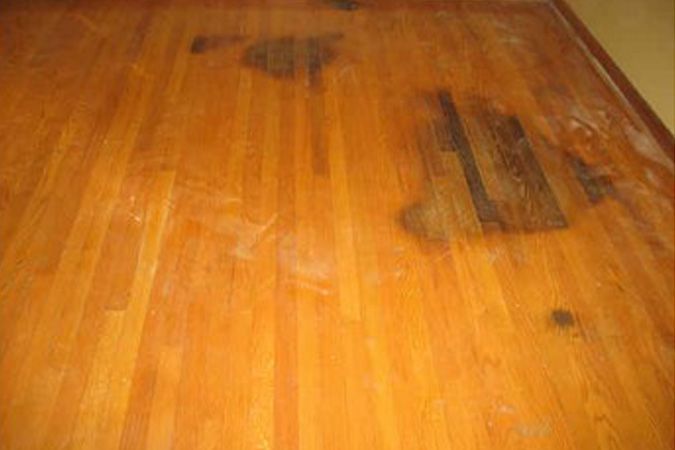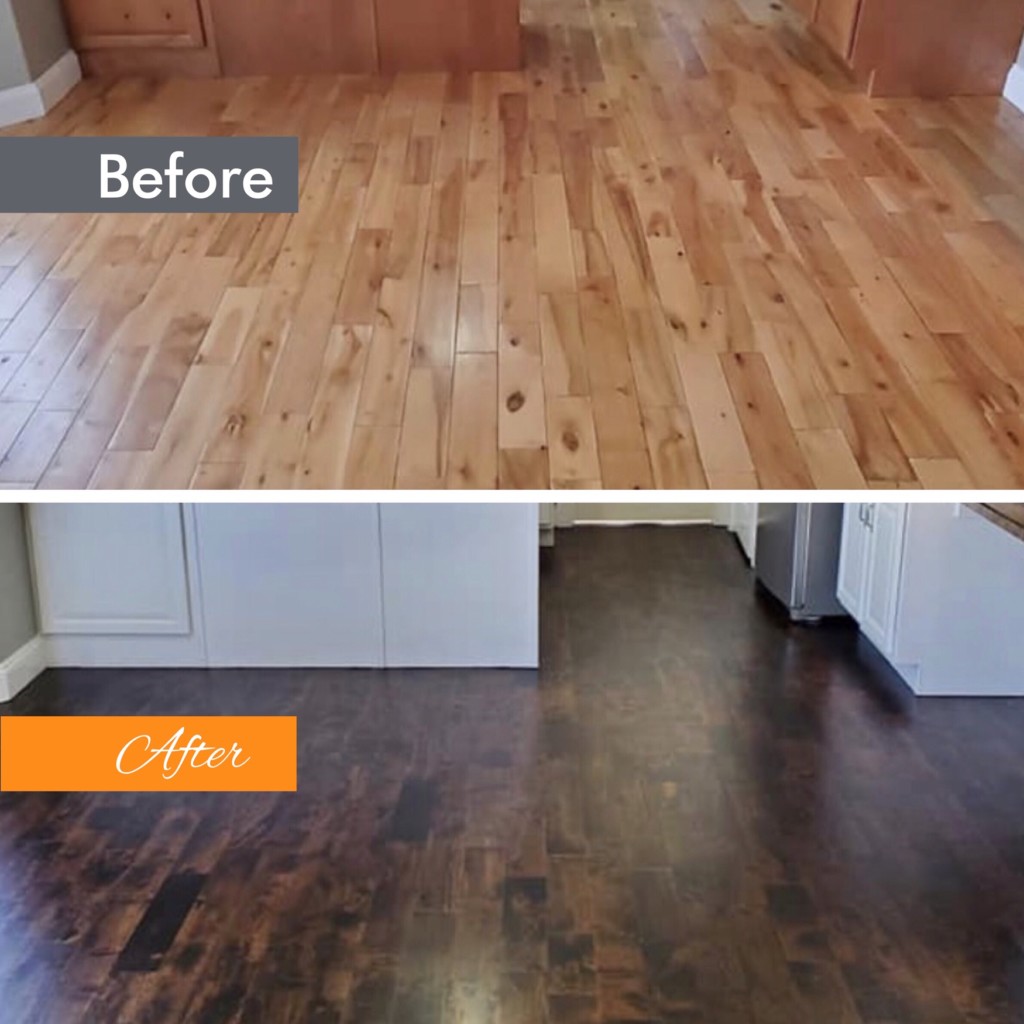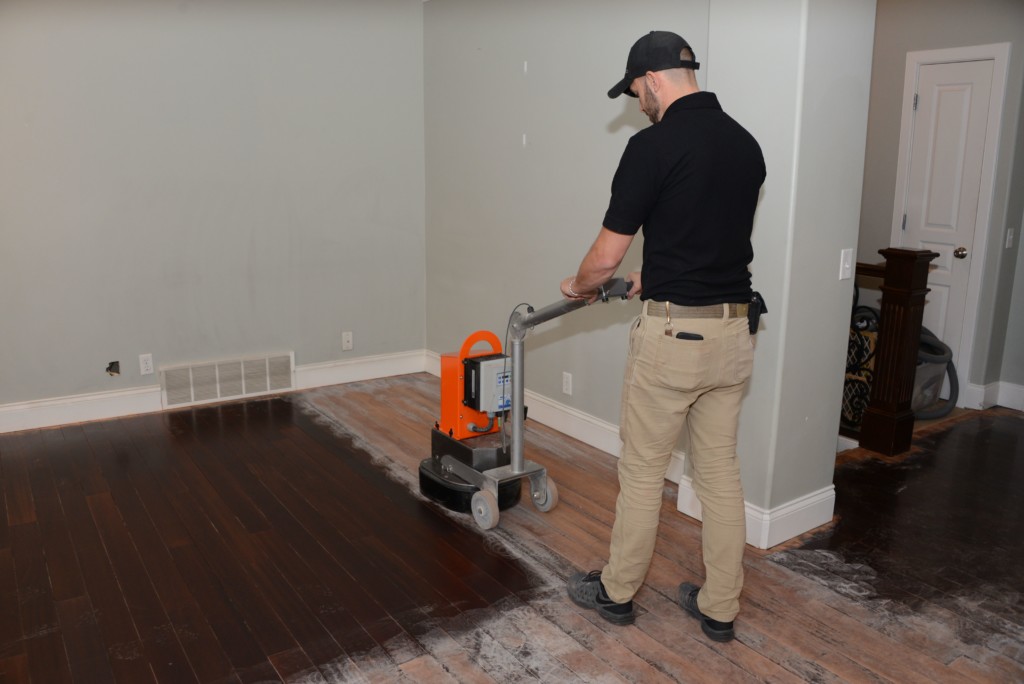There Is A Lot To Consider
So you’ve decided to get hardwood floors, but aren’t quite sure where to begin, where to look, who to hire or what all goes into the process. With so many different options, colors, textures, hardness, contractors, etc. it can feel overwhelming and sometimes even be difficult to choose a floor that fits your needs, looks good and will last. So we’ve decided to break it down for you and offer as much guidance as we can, so you will feel comfortable with your decisions.
The options are almost unlimited…scratch that, they are unlimited. Whether its hardwood or engineered, replaced or refinished, this guide will walk you through what yo need to know.
Follow These Steps
Below are a couple questions that will help guide into choosing the correct wood flooring.
1. Where is the floor being installed?
Installing hardwood floors on a second story is much different than doing so in a basement. A floor that’s even with the outside ground level is on grade, and any floors above this are above grade. Where you’re installing the wood will limit your recommended options. Sometimes due to weight, or even how well as certain wood species handles moisture. Decide where you want the wood floors and keep that in mind when talking with your contractor or hardwood refinishing company.
2. What’s your sub-floor made of?
There are three common types of sub-floor: plywood, particleboard & concrete. Finding out which of sub-floor constructions you have will dictate the materials you can best use for your new floors.
Concrete: If you have a concrete slab floor, you’re pretty much limited to engineered wood. But don’t worry, you can get pretty much any type of wood in an engineered format. The thickness of the veneer on engineered wood varies, so that thicker planks can be refinished years later if need be. Higher-end engineered woods are no less than solid woods in performance and price.
Another option is to install plywood over the concrete, but you’ll have to pay for the additional plywood, insulation and labor and this option will increase the thickness and height of your floors. Which may not be an option in some homes
Wood Plank: Was a traditional sub-flooring material used in homes built up to the mid-twentieth century. Since then, planks have been almost entirely replaced by plywood and other sheet sub-flooring. They were commonly nailed to wood joists with standard box nails, which loosen over time, leading to squeaky floors.
Many remodeled homes have wood plank sub-floors covered with particleboard or hardboard underlayment to help bridge variations among the boards and create a flat surface for installing flooring.
Plywood: This is the most common sub-floor and allows for the most versatility with hardwood floors. You can simply nail solid wood on top or use engineered wood. Your options are endless when it comes to materials, constructions, design, etc. Nothing is out of reach when you have a plywood sub-floor
Particleboard: This material is basically a cheaper version of plywood. For hardwood floors, you’ll need to replace the particleboard with plywood. Then, you can add engineered or solid wood.
3. Durability is based on lifestyle.
Think about the amount of abuse your floors will be taking and it’s easy to choose a specific wood species based on its durability. Do you have kids, pets, lots of guests? Do you move the furniture around often, work out on the floor or are constantly coming and going?
The level of traffic you have on your floors is relative to how hard you want your wood floors to be. The Janka scale is used to determine the relative hardness of particular wood species. The higher the ranking the harder, and thus more durable the wood. One of the most common species used is Red Oak. As one of the hardest woods at a moderate price, it tends to be the industry go-to.
N-Hance’s Lightspeed® process cures wood surfaces with a powerful ultraviolet (UV) light that provides a professional and durable factory finish. That is not only great for longevity, but also cuts down the drying time for your hardwood floor finish to the same day.

4. What are your priorities?
Is it cost, look, longevity? Determining what’s most important will help you choose the right wood for your floors.
Cost: You can usually purchase generic oak flooring in various stains for $3.50 to $4 per square foot, while lower-end engineered floors start at $3.00 to $5 per square foot. Some styles of engineered wood can be priced upwards of $13.00 a square foot. Not to mention the labor cost for installation, and other material costs like trim and underlayment.
Long Term: If you want something that will hold up over time, you’ll need to look at the harder woods. Also pay attention to the stain that’s been applied to the wood floor. You can always ask us which finishes last the longest.
Style: What style are you looking for? Do you want a more rustic look for that western room? Vintage if you’re restoring an older Victorian home, or something more modern for that clean & kept look? Deciding how your wood floor will add to feel of your home is very important for keeping a consistent feel and theme. We recommend doing some research even before going to the store, this way you’ll have a better idea of what you like.
It’s important to pay attention to the knots and grain in different woods. Patterns in hickory and maple are different than in oak. You may want to spend a little more for a unique grain pattern, or conserve your budget and go with a less-expensive wood with a better stain.
5. What type of stain/finish?
A stain adds color to the wood, while the finish protects your floors from getting dirty. Any stain or finish can be applied to almost any variety of wood. Some people like the color of oak but want the grain pattern of walnut. That’s where staining can come into play. Base this decision on the level of activity you’ll have on the floor with the color that best matches the color of your home.

6. How will you test it?
This is probably the most important part of making that final decision. The last thing you want to do is install 1600 square feet of black walnut based on a photo that you saw online, you might come to find out that the dark floor overpowers the room and draws away from all that nice artwork on the walls.
Almost all suppliers will give you a certain size sample of the flooring with your desired stain and finish on it. Use this to test it with your paint colors and decor in your home to make sure it’s exactly what you want.
Sticking to the steps in this guide will help keep you from getting too overwhelmed during your home remodel and will let you incorporate all your inspiration into the design of your new floors. If you still have questions about hardwood flooring, sanding or refinishing, please call or email us anytime and let us help.


